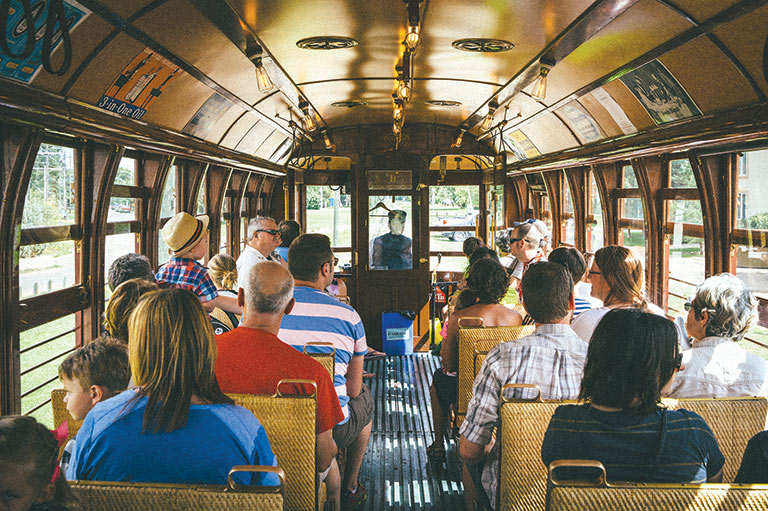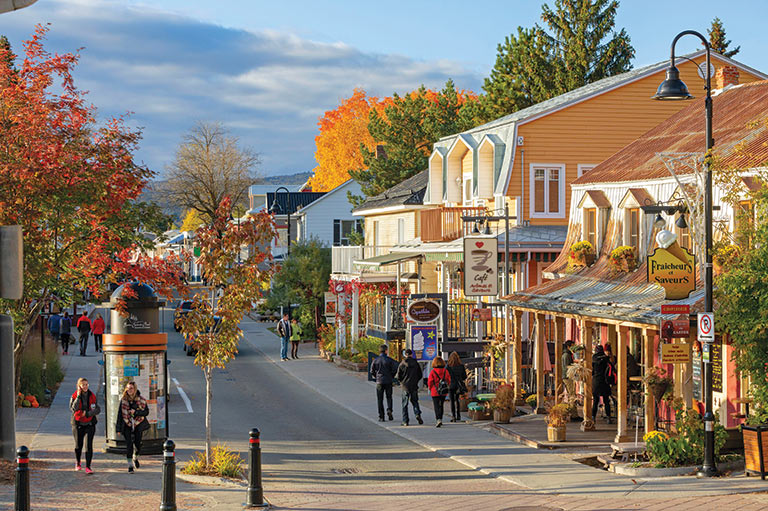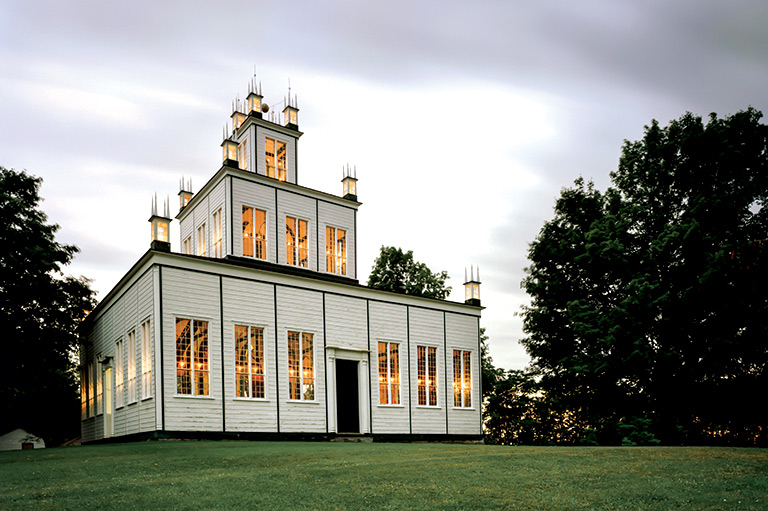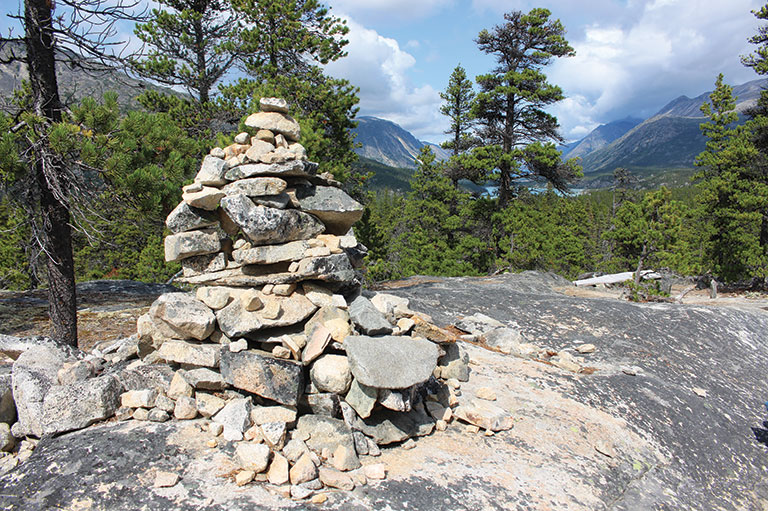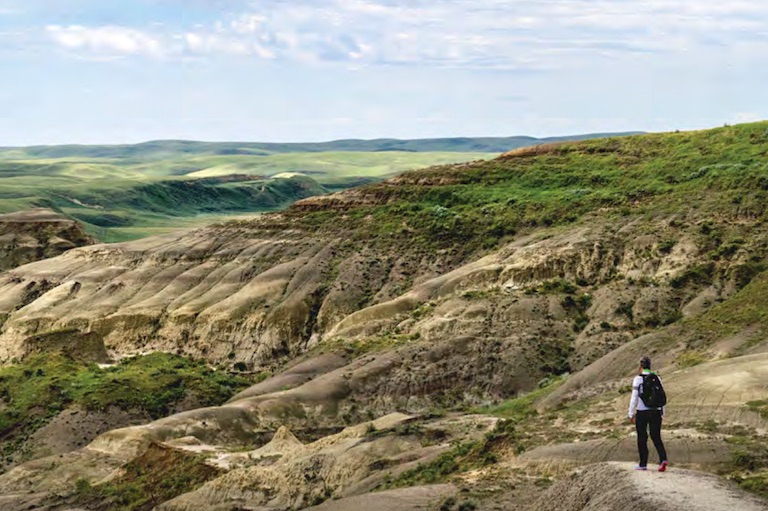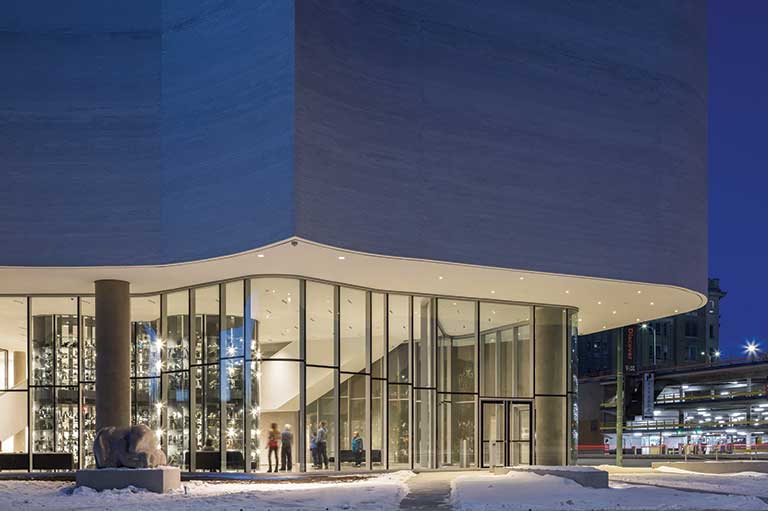From Prehistory to a Prime Minister
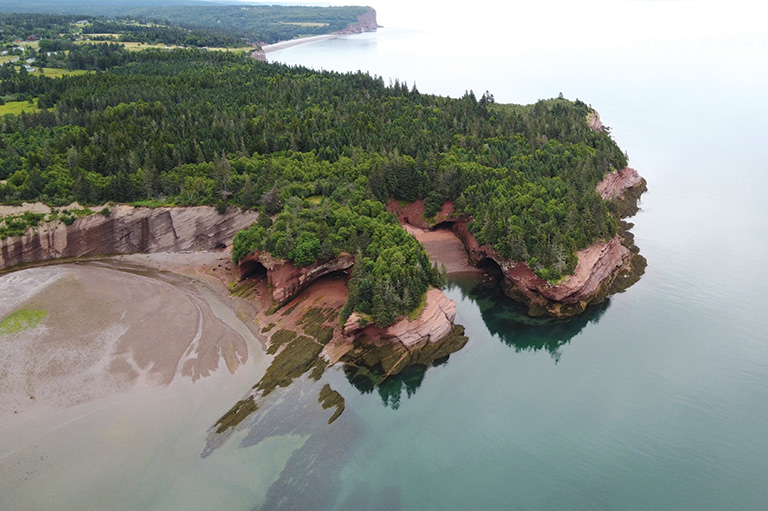
In the space of a few hours’ drive along New Brunswick’s Bay of Fundy shore, it’s possible to travel hundreds of millions of years. The journey from the Devonian period to the Depression winds through breathtaking scenery and pays off in new perspectives.
Stonehammer UNESCO Global Geopark covers an enormous area in the south of the province, celebrating and promoting the region’s unique geography and connecting it with human heritage and culture. If that all sounds a little abstract, standing at the famous Reversing Falls makes it real. Visitors see a swirling mass of water where the powerful Bay of Fundy tides push water back up the Saint John (Wolastoq) River twice a day, but enthusiastic Stonehammer guide Patrick Sorensen sees more. He recognizes a collision of continents and hears echoes of millennia of human history as vehicles whiz over a nearby bridge.
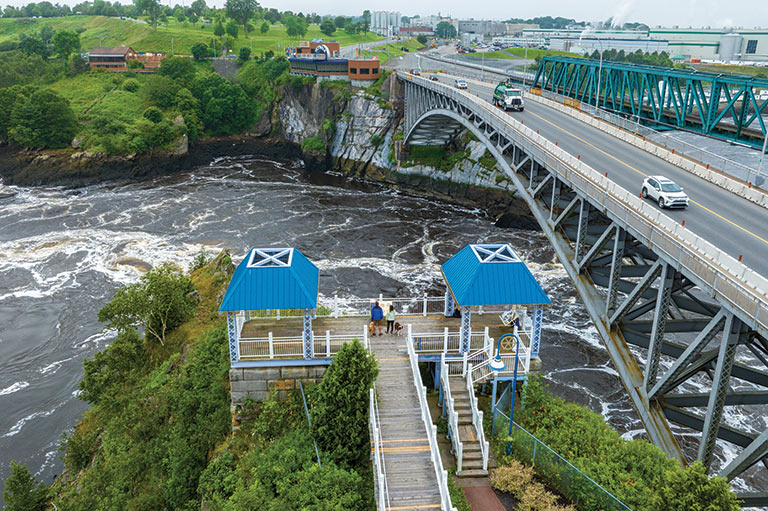
Sorensen points to a dramatic cliff across the river, a remnant from the supercontinent Pangea where what are now Africa and South America once met. As I marvel at the roiling water, Sorensen talks of Acadians escaping English pursuers who had underestimated the water’s turbulence. He also shares a story from the oral tradition of the Wolastoqiyik Indigenous people of the Saint John River watershed. Their name means “people of the beautiful and bountiful river,” and the story explains how the powerful teacher and mentor Koluskap demoted giant beavers to their current size in order to limit the flooding they caused.
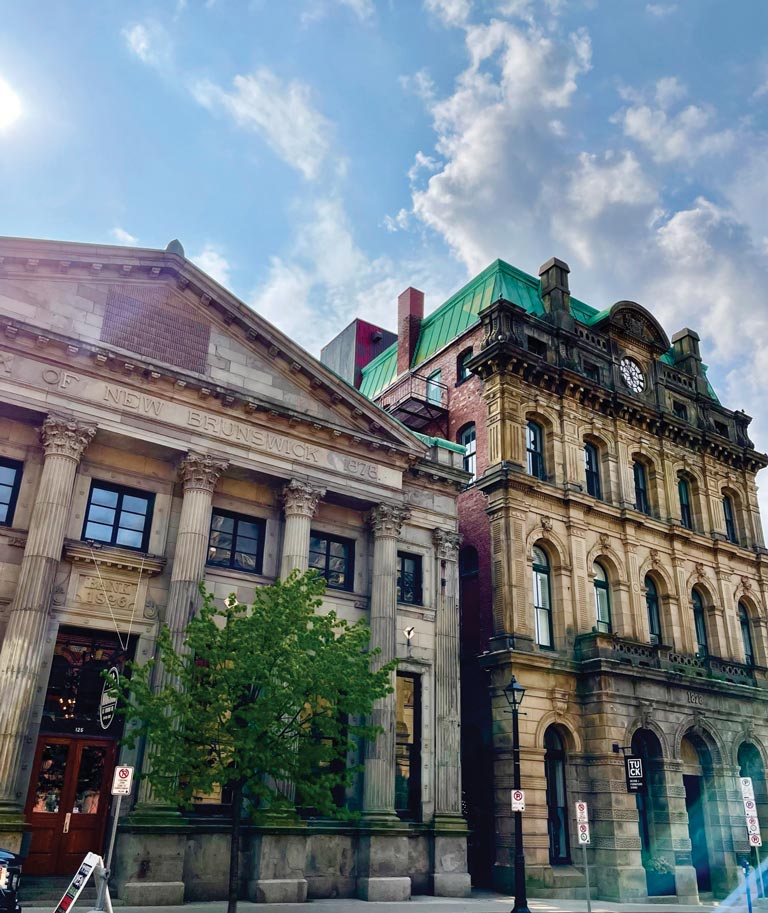
Stonehammer encompasses multiple locations, including Saint John — established in 1785 and still an important port, if no longer a world-famous shipbuilding centre. After the roughly twenty-block city centre, known as Uptown, burned to the ground in 1877, wealthy businessmen outdid each other in reconstruction efforts that resulted in streets lined with impressive brick and stone buildings, often adorned with flourishes such as marble pillars and ornate carvings. Former headquarters of banks and maritime insurance companies now house cafés, art galleries, and even an axe-throwing club on what was once known as the Wall Street of Saint John.
A closer look reveals grotesques — similar to gargoyles, but without the waterspouts — nestled into nooks and leering over ledges. Many were carved by one artisan, James McAvity, who was not above lampooning people he disliked or taking a dig at clients, as with the devilish face spitting coins above the entrance to a former bank.
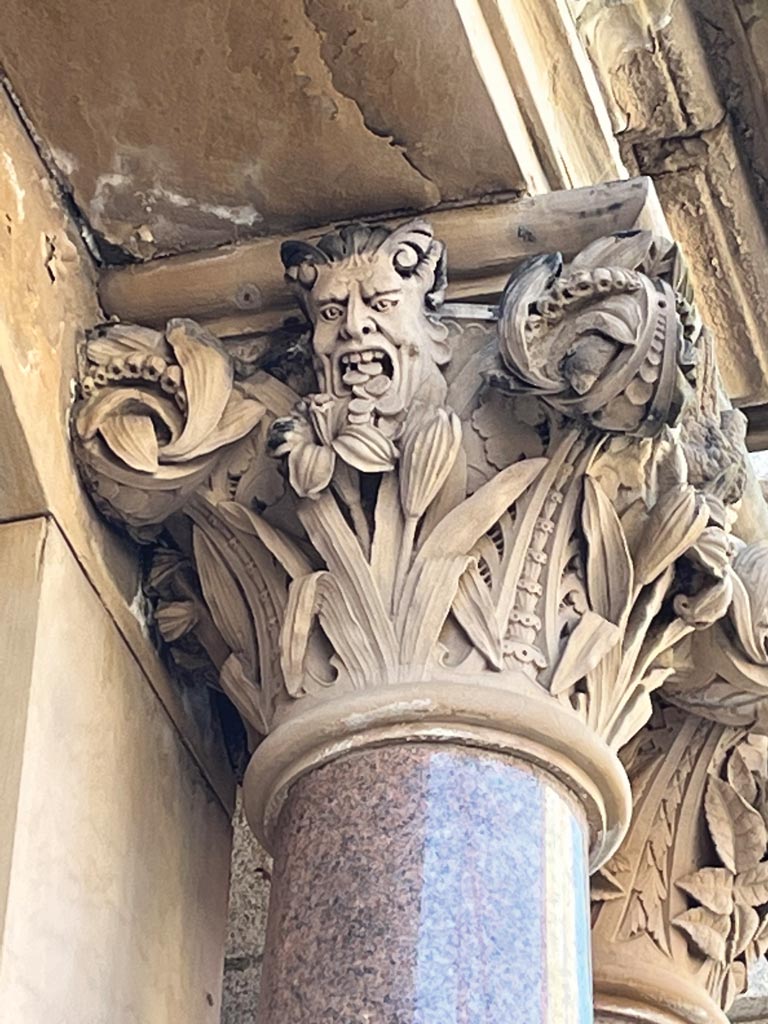
From the Saint John City Market — established in 1876 and one of the longest-operating markets in Canada — to the Three Sisters Lamp, with its red lights to guide ships into the harbour, and Canada’s oldest public high school (established in 1805), there’s a discovery every few paces. Rather than being preserved as a twee version of the past, Uptown is both lively and down-to-earth.
Leaving Saint John behind is made easier by what lies ahead along the Fundy Trail Parkway, which starts at the beautiful village of St. Martins, about forty-five minutes up the shore. The parkway is only about thirty kilometres long and is designed to be driven at an easy pace. People in a hurry take other routes, leaving this one for those who are looking to relax and to pull off frequently to enjoy stunning vistas, beaches, waterfalls, hikes, and more in parkland unmarred by commercial development.
Completing the newly connected drive through peaceful Fundy National Park, it’s only another half hour or so to the small community of Hopewell Cape near the mouth of the Petitcodiac River. The eight buildings that make up the Albert County Museum, from the tax and records offices to the jail and exhibition hall, collectively tell the stories of “the people of the tides”: sea captains and farmers, shipbuilders and miners. Unlike the settler villages of my Ontario home, the buildings are original to the site. During my visit, the 1870 community hall is set up for the next day’s student Heritage Fair; the beautifully maintained Albert County Court House hosts weddings and concerts.
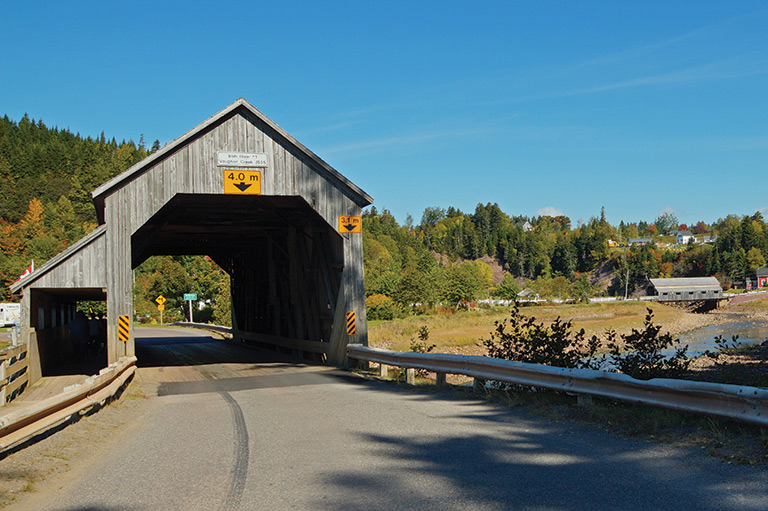
The only New Brunswick-born prime minister, Richard Bedford (R.B.) Bennett, gets top billing here. He left Atlantic Canada at age twenty-seven for Calgary, where he was elected to serve in the federal government, and he’s buried in England, where he moved, disheartened, after leaving public life in Canada.
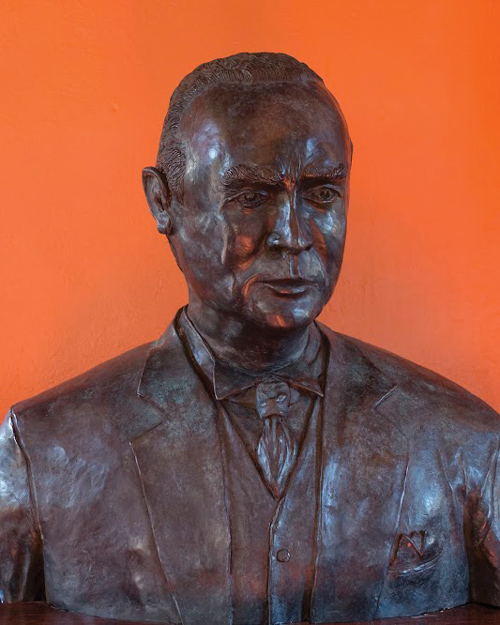
But in the region where he was born Bennett is still celebrated, not just as a great son of New Brunswick but also for his philanthropy and political vision. As the museum’s managing director Janet Clouston notes, Bennett is too often remembered as indecisive, or blamed for the Great Depression without receiving enough credit for the nation-building projects he oversaw, including the creation of the Canadian Radio Broadcasting Commission (forerunner of the CBC), the Bank of Canada, and the Canadian Wheat Board. She says he gave away something like eighty million dollars during his lifetime, sending his own money to desperate citizens who wrote pleading for the prime minister’s help.
What I’ve learned at the Albert County Museum gives me a new perspective on the landscape as I make the return trip. This time I know what I’m looking at when I see the low ridges running through the grasslands beside the water. Known as aboiteaux, these ingenious diking systems were created by Acadian settlers to irrigate their crops and to limit the impact of the world’s highest tides on their land — land the English forced them to leave, starting in 1755.
From grand buildings to their granite underpinnings, from sandstone cliffs to the beginnings of modern Canada — in this beautiful part of our country, the more you know the story behind what you’re seeing, the more deeply you’ll be entranced.
IF YOU GO
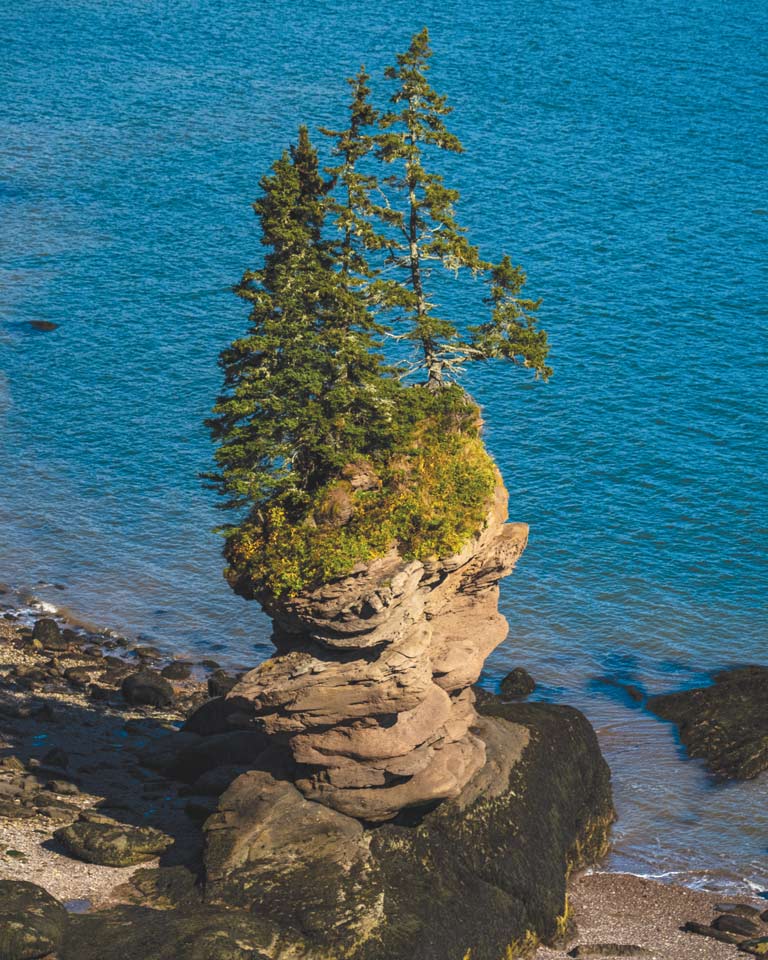
EAT AND DRINK: Uptown Saint John is packed with restaurants, pubs, and specialty shops. Recommended: Java Moose, East Coast Bistro, Bella’s Ice Cream, Picaroon’s General Store microbrewery, and Pomodori Pizza. Several places in the village of St. Martins offer lobster rolls and other seafood, while Kelly’s Bake Shop in Alma is renowned for its sticky buns.
STAY: Make a cabin at Fundy Highlands Motel and Chalets your base for exploring the national park and along the Fundy shoreline. Pick up seafood fresh off the boat in nearby Alma; depending on when you arrive, those boats might be floating on the world’s highest tides or sitting on the mud.
EXPLORE: Arrive in St. Martins at low tide to check out the sea caves, then head off on the gorgeous Fundy Trail Parkway, open mid-May to late October. Bring a lunch to enjoy at a stop along the way, and try as many of the short hikes as you have time for, especially to Walton Glen Gorge.
We hope you’ll help us continue to share fascinating stories about Canada’s past by making a donation to Canada’s History Society today.
We highlight our nation’s diverse past by telling stories that illuminate the people, places, and events that unite us as Canadians, and by making those stories accessible to everyone through our free online content.
We are a registered charity that depends on contributions from readers like you to share inspiring and informative stories with students and citizens of all ages — award-winning stories written by Canada’s top historians, authors, journalists, and history enthusiasts.
Any amount helps, or better yet, start a monthly donation today. Your support makes all the difference. Thank you!
Themes associated with this article
Advertisement
You might also like...
With 7 uniquely curated newsletters to choose from, we have something for everyone.

